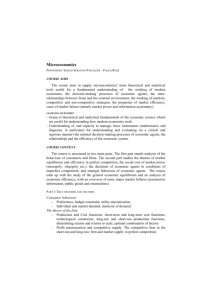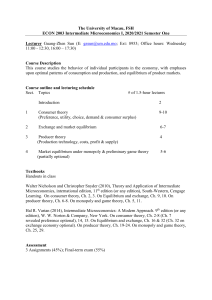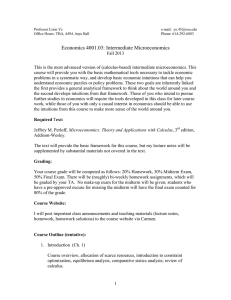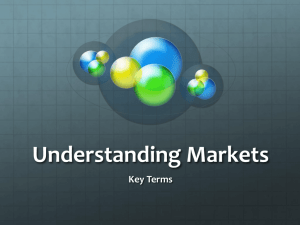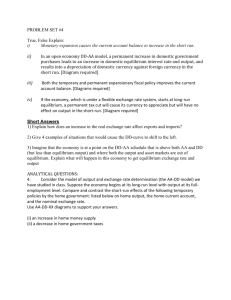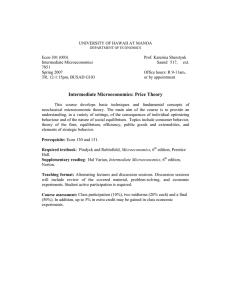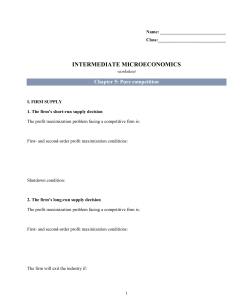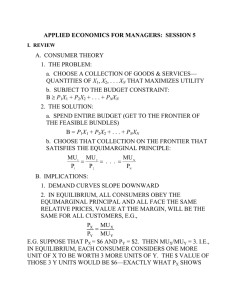Professors Sergio Serafino Parazzini – Paolo Rizzi
advertisement
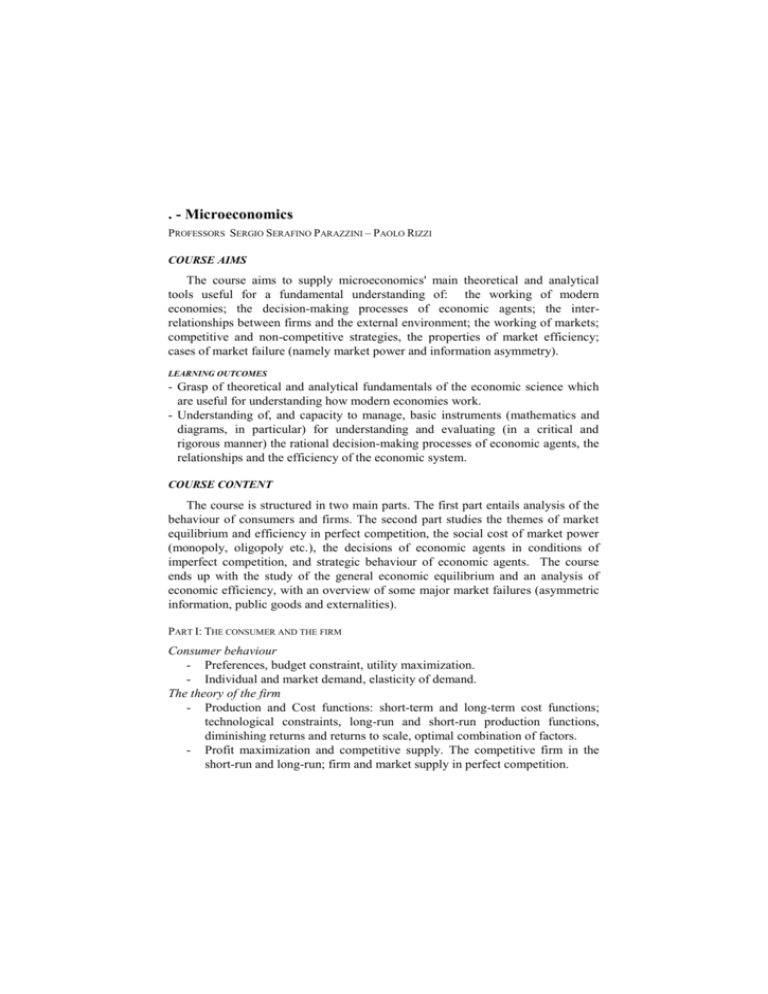
. - Microeconomics PROFESSORS SERGIO SERAFINO PARAZZINI – PAOLO RIZZI COURSE AIMS The course aims to supply microeconomics' main theoretical and analytical tools useful for a fundamental understanding of: the working of modern economies; the decision-making processes of economic agents; the interrelationships between firms and the external environment; the working of markets; competitive and non-competitive strategies, the properties of market efficiency; cases of market failure (namely market power and information asymmetry). LEARNING OUTCOMES - Grasp of theoretical and analytical fundamentals of the economic science which are useful for understanding how modern economies work. - Understanding of, and capacity to manage, basic instruments (mathematics and diagrams, in particular) for understanding and evaluating (in a critical and rigorous manner) the rational decision-making processes of economic agents, the relationships and the efficiency of the economic system. COURSE CONTENT The course is structured in two main parts. The first part entails analysis of the behaviour of consumers and firms. The second part studies the themes of market equilibrium and efficiency in perfect competition, the social cost of market power (monopoly, oligopoly etc.), the decisions of economic agents in conditions of imperfect competition, and strategic behaviour of economic agents. The course ends up with the study of the general economic equilibrium and an analysis of economic efficiency, with an overview of some major market failures (asymmetric information, public goods and externalities). PART I: THE CONSUMER AND THE FIRM Consumer behaviour - Preferences, budget constraint, utility maximization. - Individual and market demand, elasticity of demand. The theory of the firm - Production and Cost functions: short-term and long-term cost functions; technological constraints, long-run and short-run production functions, diminishing returns and returns to scale, optimal combination of factors. - Profit maximization and competitive supply. The competitive firm in the short-run and long-run; firm and market supply in perfect competition. PART II: MARKET STRUCTURES AND COMPETITIVE STRATEGIES Competitive markets analysis: - Analysis of competitive markets: equilibrium and efficiency; deadweight loss; government policies and market equilibrium. Monopoly Markets - Monopoly: social costs, pricing with market power - Price discrimination and advertising Imperfect competition and strategic behaviour - Game theory and competitive strategy. Market structures and competition - Oligopoly: collusion and competition Exchange Economy and market - General economic equilibrium and economic efficiency. READING LIST D.A. BESANKO-R.R. BRAEUTIGAM, Microeconomia, McGraw-Hill, Milan, 2012. R.S. PINDYCK-D.L. RUBINFELD, Microeconomia, 7a ed., Pearson, Milan, 2009. M.L. KATZ-H.S. ROSEN-C.A. BOLLINO-W. MORGAN, Microeconomia, McGraw-Hill, 4a ed., Milan, 2011. TEACHING METHOD The course will be taught through lectures and assignments that will be planned at the start of each quarter. ASSESSMENT METHOD Written mid-term exam in relation to Part I of the course. Written final exam, that may be supplemented by an interview. NOTES Further information can be found on the Faculty notice board.
